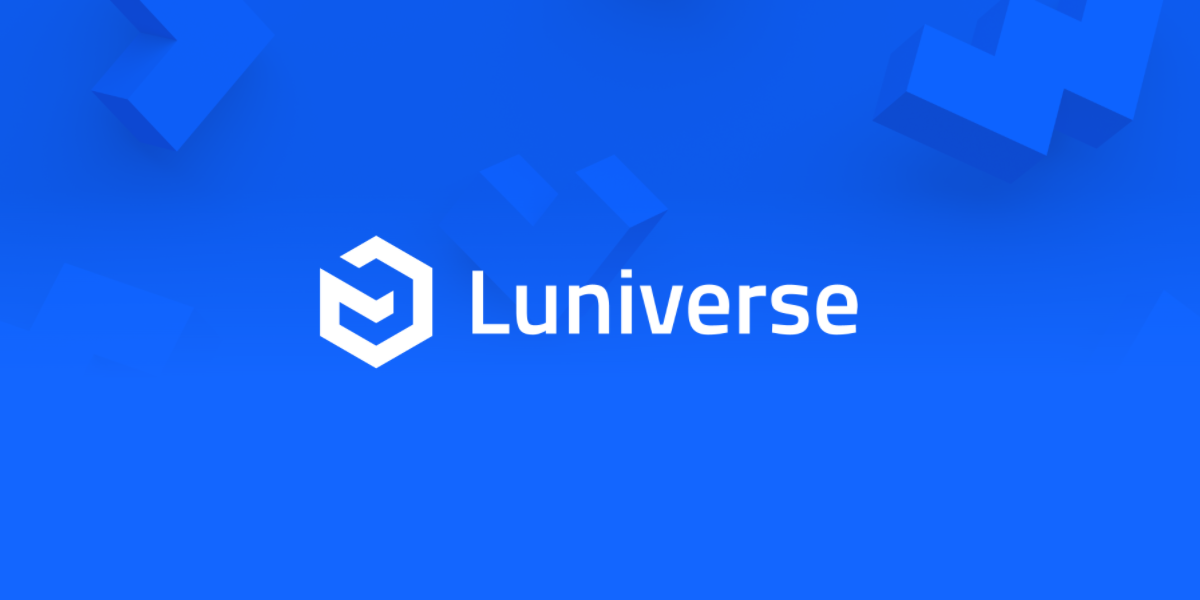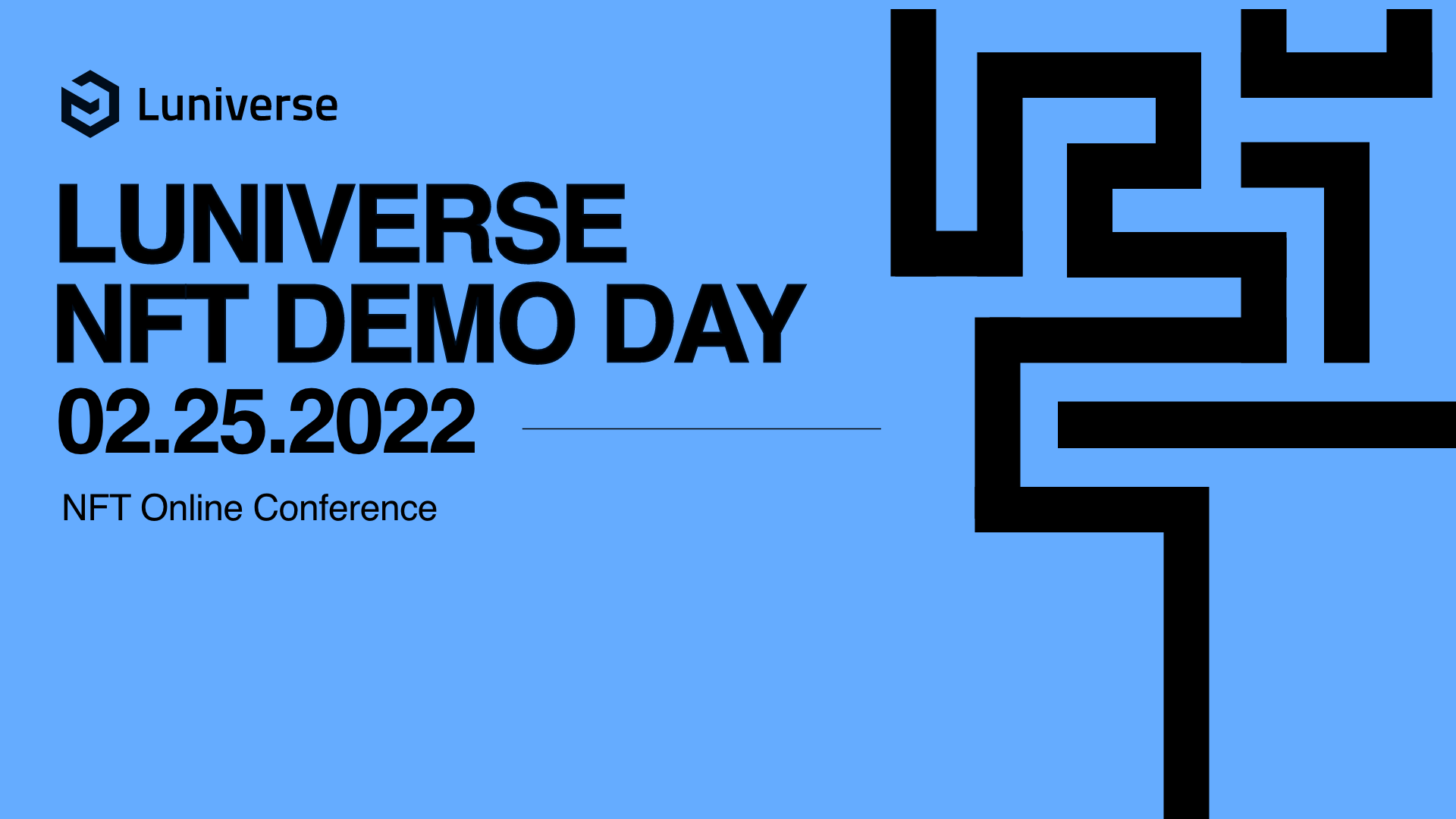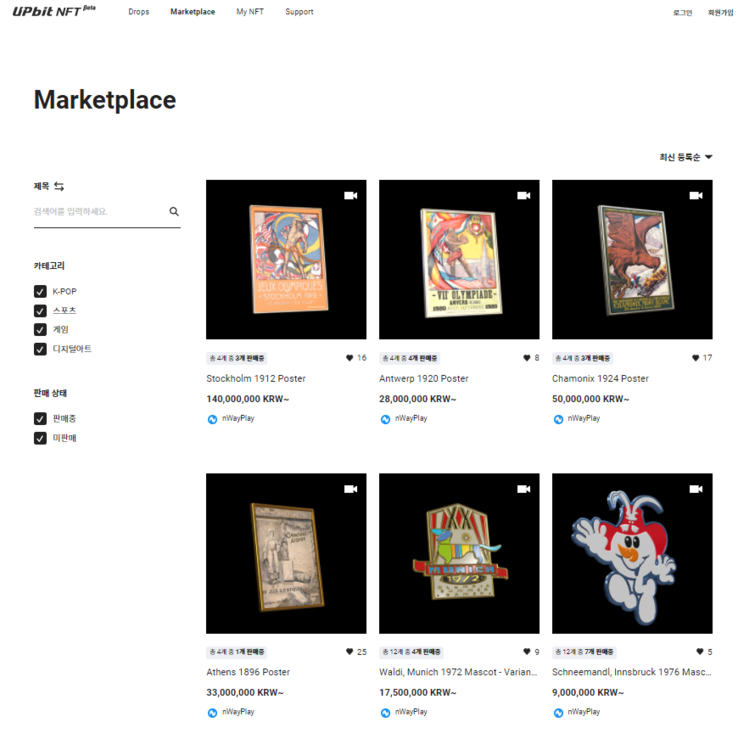By Martin Oh, CTO of Lambda256
2021 was a remarkable year for NFT, as it started to play a salient role as a blockchain application. Both trade volume and the price of NFT increased dramatically. The proof of ownership using blockchain technology was the core reason for the success of NFTs.
Traditional artworks are not very reproducible, and their owners are the physical holders. On the other hand, the originality and ownership of digital products – such as images, videos, and sound – were difficult to be proven due to their high reproducibility. Proving ownership of digital products with electronic signature technology applied in blockchain, NFTs started to be used in various fields.
Metaverse, a link between the cyber- and real-world, is no longer a future. Users will more actively create digital products in Metaverse. User-created content, or UCC, was nothing new even before the advent of blockchain. Nevertheless, the consumption of UCC was limited to the service on which it was created; outside the service, the digital content could not be used.
Unlike digital products on the existing UCC services, those made with blockchain prove both the creator and the owner of them. Thus, user-created digital products are not restricted to certain services.
Luniverse NFT Service
To support NFT trends, Lambda256 also revealed the Luniverse NFT service in 2021. Users of Luniverse NFT API can use both Luniverse Main Chain and Luniverse Side Chain, which are selectable depending on the circumstance.
Using Luniverse NFT service API, users can also add functions to issue NFTs on applications. Luniverse NFT service API supports contract management, media data management, metadata management, and token management.
In contract management, users can 1) deploy NFT contracts on the blockchain and 2) view the list of deployed contracts. In media data management, users can manage the images, videos, and audio of the NFT tokens. Media data are saved in AWS S3, and the services are connected to the CDN service for a quick download in the application.
|
|
|
For example, if the 387 transaction above disappears after the 386 transaction is mined, the 388 transaction pauses in the waiting queue before being processed. After a certain amount of time, the 388 disappears.
The patented technology, the Transaction Pipeline, prevents such issues.
|
{
"from": "0x42f8ef8f7e39fa1da1de9ba6065e7d393726c4ad",
"to": "0x39ee482623594871d2eaf7ccd0b9c6120ad434f8",
"data": "0x05be2544..."
} |
{
"txHash": "0xbe2801f406a07694f2407bee047c468e9061b2440c481a71d2c692272809b3bd"
"from": "0x42f8ef8f7e39fa1da1de9ba6065e7d393726c4ad",
"to": "0x39ee482623594871d2eaf7ccd0b9c6120ad434f8",
"data": "0x05be2544..."
} |
Luniverse NFT Minting Tool
< NFT Contract Management API >

< NFT Media Data Management API >

< NFT Metadata Management API >

< NFT Token Management API >

The API specifications of the Luniverse NFT service can be checked at https://api.luniverse.io/nft/v2/docs/.
Luniverse NFT Minting Tool
Luniverse NFT API provides basic functions necessary to issue NFT only in API, which means that it is a tool for developers, so it is difficult for users who are not developers to issue NFTs. Thus, we made an NFT Minting Tool for non-developers. The NFT Minting Tool offers functions for contract deployment, media data management, metadata management, and token issue, using a web interface.

NFT Metadata
The NFT Metadata is largely divided into basic metadata and extended metadata – or on-chain metadata and off-chain metadata, based on where it is saved. Basic metadata is defined in the ERC721, the standard of the Ethereum NFT, and is saved on-chain. Basic metadata of the Luniverse NFT service is saved on-chain, while the extended metadata is saved off-chain.
- Basic metadata: name, symbol, and tokenURI are basic metadata, and they are defined in the ERC721Metadata interface. Name and symbol are the same value regardless of the token, and only the tokenURI alters based on the token ID. tokenURI, on the other hand, can be set to change depending on the status of a token. Basic metadata can be viewed on-chain using the ERC721 contract.
interface ERC721Metadata {
function name() external view returns (string _name);
function symbol() external view returns (string _symbol);
function tokenURI(uint256 _tokenId) external view returns (string);
} |
All metadata except for the basic metadata is called extended metadata. The extended metadata can be recorded on or outside the blockchain; the Luniverse NFT service records all extended metadata off-chain.
- Extended metadata: By extending the ERC721, extended metadata can be saved and viewed on-chain. In fact, it is ideal to record the extended metadata on the blockchain. However, it requires a high storage fee. Therefore, Luniverse saves the extended metadata only off-chain.
- Off-chain metadata: Metadata that cannot be viewed through the chain, but through tokenURI
- The two types of off-chain metadata are media data and property data. The current version of the Luniverse NFT service directly saves and manages metadata in the NFT service. Because of the decentralizing feature of the blockchain, NFTs can be used without being restricted to a certain service. However, for smooth web service, metadata is now managed in a centralized server. To transact NFT tokens issued in Luniverse to a decentralized wallet, such as Metamask or D’cent, the metadata of tokens should be copied to P2P decentralized storage, such as IPFS. Then, the owner of the token will completely own the metadata without a centralized server.
{
"name":"BraveGirls Eunji Special Color (B&W) #15/15",
"description":"[Special Color (B&W)] The best sniper on earth, Eunji",
"image":"https://nft-cdn.luniverse.io/public/777070ca-6030-4331-b47b-712e3fa0a47f_2021-06-15T09:07:18.184Z.png",
"ipfs" : "ipfs://777070ca-6030-4331-b47b-712e3fa0a47f/2021-06-15T09:07:18.184Z.png",
"imageHash":"7a5af6d66da0d02767539698e68ce132a5fba1a5636836a2234a77b7124f4b16",
"createdBy":"John Smith",
"createdDate":"2021-06-17",
"editionNo":"15",
"editionMax":"15”,
"properties":[
"width": 96,
"height": 96
]
} |
NFT Media Data
Luniverse NFT service currently saves media data in S3 and offers a function to view media data through CDN for a smooth service. The NFT contract is built to prove the originality of the media data by recording a hash value.
Luniverse plans to offer an option for the media data to be viewed in a decentralized wallet without a centralized server, just like for the metadata. The function will be offered by copying in a P2P decentralized file system, like IPFS.
Functions To Be Added
NFT Minting Tool
Currently, Upbit and Upbit CPs(Content Providers) are provided with NFT minting tools for Upbit Marketplace. Data shows that Luniverse users mint NFT for B2B uses more than individual uses, so Luniverse will offer B2B NFT Minting tool in SaaS (Software as a Service format) within the first quarter of 2022.
Multichain Support
Luniverse NFT Minting Tool, at this moment, only allows NFT deployment in the Luniverse Main-Chain and Side-Chain. However, requests to deploy NFT tokens on Ethereum Mainnet are increasing among Luniverse users because the token deployment in Ethereum is accepted in virtually all VASPs or marketplaces. Therefore, by the third quarter of 2022, various chains – such as Ethereum, Polygon, and Solana – will be supported for NFT deployment.
Decentralized Metadata Service
Luniverse supports some decentralized wallets, like Metamask and D’Cent. Users that use decentralized wallets need to inquire about metadata and media data without a centralized service. Luniverse will develop an inquiry function about metadata by saving NFT metadata and media data in the P2P file system, which means that a centralized server will not be necessary.
NFT Bridge
As of February 2022, there are approximately 38,488 NFT contracts deployed in the Ethereum blockchain, and fees to transact NFTs are around $18. Activation of blockchain applications such as DeFi and NFT brings about high gas fees and transaction process performance issues. Ironically, as more people use the Ethereum Mainnet, both the value and transaction fees of Ethereum increase, eventually hampering the use of Ethereum Mainnet.
Once Metaverse is activated, various items to ornate Metaverse will be created and traded as NFTs. If the transactions of the Metaverse are recorded in the Ethereum Mainnet, the services related to NFTs will not be smoothly supported due to the low transaction process rate. Thus, the Metaverse systems will likely have to create their own blockchain.
However, they will also have to support trading NFTs created on other public chains on their service, which will require bridge protocols. Luniverse is building an NFT bridge to enable the use of NFTs deployed in Ethereum, Solana, and Polygon; by the end of the first quarter of 2022, Ethereum Mainnet bridge service will be supported.
For the last three years, Luniverse has been developing a BaaS platform for users without much blockchain knowledge to easily use blockchain. In 2022, Luniverse, as a blockchain enabler, will develop various services and tools that will contribute to popularizing NFT.
Luniverse NFT
Are you curious about Luniverse NFT? Contact us at support@lambda256.io for a meeting.
Join the Luniverse Discord community to check out and communicate about the latest news of Luniverse and NFT!












